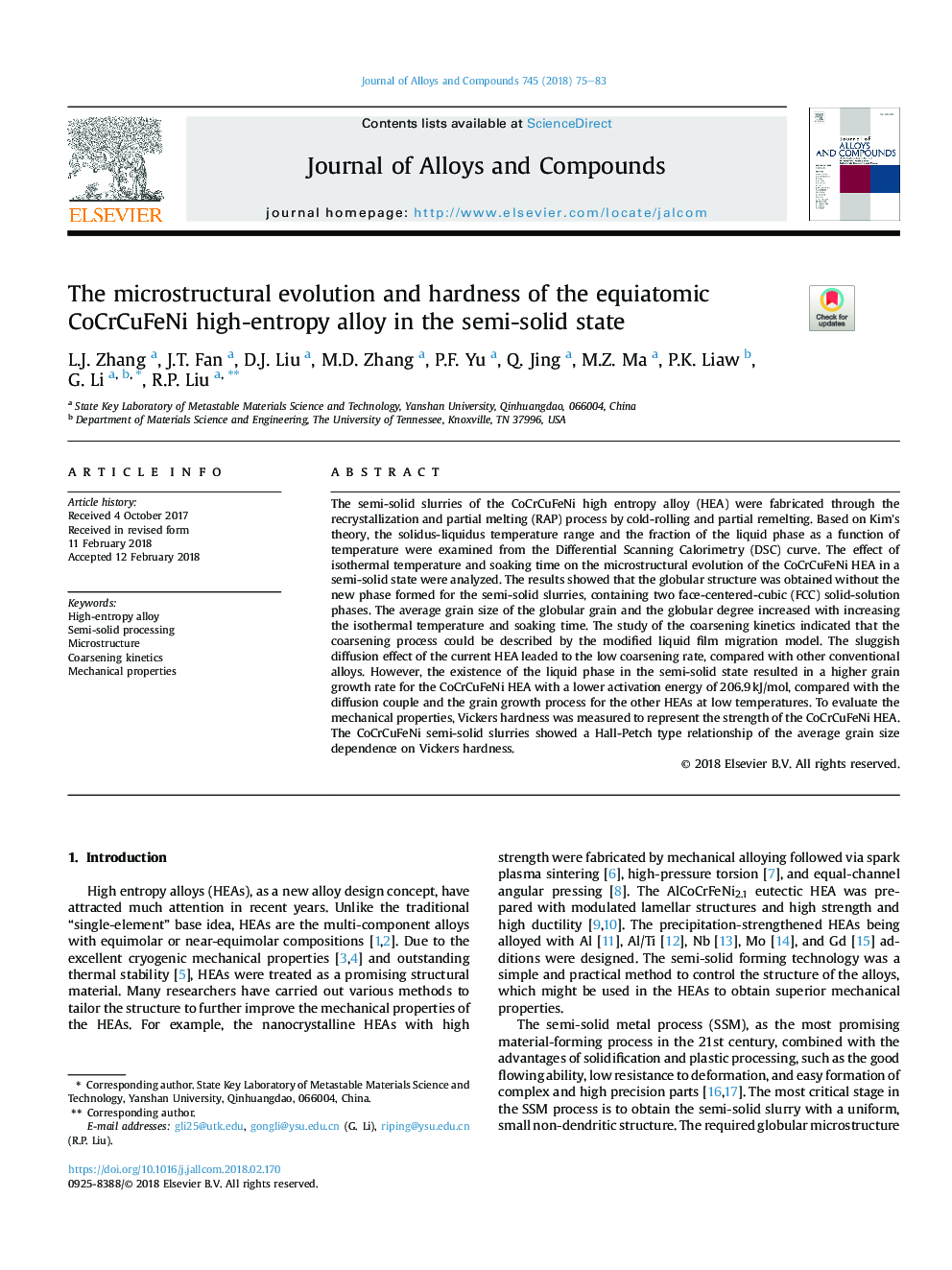| Article ID | Journal | Published Year | Pages | File Type |
|---|---|---|---|---|
| 7992619 | Journal of Alloys and Compounds | 2018 | 9 Pages |
Abstract
The semi-solid slurries of the CoCrCuFeNi high entropy alloy (HEA) were fabricated through the recrystallization and partial melting (RAP) process by cold-rolling and partial remelting. Based on Kim's theory, the solidus-liquidus temperature range and the fraction of the liquid phase as a function of temperature were examined from the Differential Scanning Calorimetry (DSC) curve. The effect of isothermal temperature and soaking time on the microstructural evolution of the CoCrCuFeNi HEA in a semi-solid state were analyzed. The results showed that the globular structure was obtained without the new phase formed for the semi-solid slurries, containing two face-centered-cubic (FCC) solid-solution phases. The average grain size of the globular grain and the globular degree increased with increasing the isothermal temperature and soaking time. The study of the coarsening kinetics indicated that the coarsening process could be described by the modified liquid film migration model. The sluggish diffusion effect of the current HEA leaded to the low coarsening rate, compared with other conventional alloys. However, the existence of the liquid phase in the semi-solid state resulted in a higher grain growth rate for the CoCrCuFeNi HEA with a lower activation energy of 206.9â¯kJ/mol, compared with the diffusion couple and the grain growth process for the other HEAs at low temperatures. To evaluate the mechanical properties, Vickers hardness was measured to represent the strength of the CoCrCuFeNi HEA. The CoCrCuFeNi semi-solid slurries showed a Hall-Petch type relationship of the average grain size dependence on Vickers hardness.
Keywords
Related Topics
Physical Sciences and Engineering
Materials Science
Metals and Alloys
Authors
L.J. Zhang, J.T. Fan, D.J. Liu, M.D. Zhang, P.F. Yu, Q. Jing, M.Z. Ma, P.K. Liaw, G. Li, R.P. Liu,
